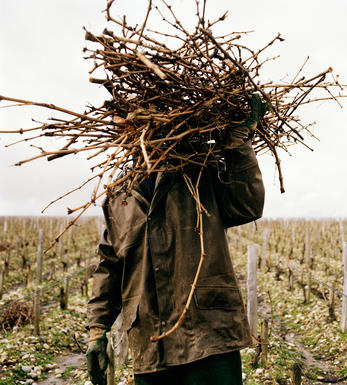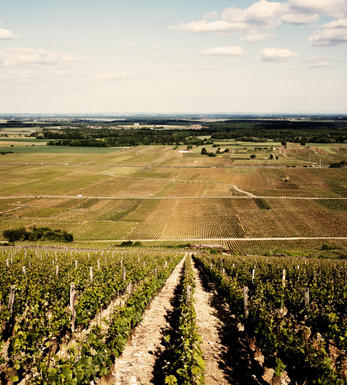
2012 Clos Vougeot, Grand Maupertuis, Grand Cru, Domaine Michel Gros, Burgundy

About this WINE

Domaine Michel Gros
Michel, the eldest of Jean Gros’ children, took over running the family domaine fresh from wine school in 1975, on account of his father’s ill health. He has added further vineyards of his own, and rents more, to compensate for the parts of Domaine Jean Gros which went to his siblings in 1995.
Repeated accolades, including being the International Wine Challenge’s Red Winemaker of the Year two years running (2008-2010) indicate that this is a producer who delivers fine wine, but Michel Gros has his own clear ideas of what methods to use, which are not always in tune with current received wisdom.
The vineyards are run according to lutte raisonée, with grassing between the rows in the Hautes-Côtes de Nuits and some deeper soils on the main hillsides, otherwise contact herbicides are used. Michel is against ploughing, and also prefers the occasional limited use of synthetic sprays to the copper which is permitted under organic and biodynamic viticulture rules.
At harvest, the sorting is done in the vineyard with chosen sorters working alongside the pickers. The grapes are 100 per cent destemmed then encouraged to start fermenting almost immediately through the addition of selected yeasts. If the required percentage of alcohol (around 13 per cent for village wines and above) is not there naturally, part of the juice is passed through an entropy evaporator to concentrate it, and then blended back into the rest of the cuvée. After fermentation the juice is heated up to 35°C/95ºF to complete the extraction of the tannins and fixing of the colour, then left to settle for a week in tank before going to barrel with just the finest lees. The wines spend 20 months in wood, one third new at village level, 50 per cent for premier cru and 100 per cent for the three barrels of Clos de Vougeot. Michel likes heavily toasted barrels, as his father did before him, mostly from Tonnelerie Rousseau and the Tronçais forest.
From all this it is clear that Michel Gros is relatively interventionist in his winemaking and it is true that there is a house style of concentrated red fruits, but the individual cuvées do nonetheless reflect their individual terroirs, from the darker fruit and more prominent tannins of Nuits-St-Georges Chaliots to the supreme elegance of Clos des Réas.
Jasper Morris MW, Burgundy Wine Director and author of the award-winning Inside Burgundy comprehensive handbook.

Vougeot
Most of the wine produced in this small village comes from a single, walled Grand Cru vineyard, the famous Clos de Vougeot. The vineyard in its present form dates from 1336 (when it was first planted by monks of Cîteaux), although it was not until the following century that it was entirely enclosed by stone walls.
Clos de Vougeot is both the smallest commune and the largest Clos in the Cote d’Or. It consists of 50 hectares of vineyards shared among 82 owners, with six soil types. There is quite a difference in quality between the upper (best) and lower (least fine) parts of the vineyard, though in medieval times a blend from all sectors was considered optimum.Le Domaine de la Vougeraie makes a very fine white wine from Le Clos Blanc de Vougeot, first picked out by the monks of Cîteaux as being suitable ground for white grapes in the year 1110.
- Five hectares of village Vougeot
- 12 hectares of Premier Cru vineyards (four in all): Les Cras, Les Petits-Vougeots, Clos de la Perrière and Clos Blanc de Vougeot
- 51 hectares of Grand Cru vineyard – Clos de Vougeot
- Recommended producers: Domaine de la Vougeraie, Domaine Bertagna, Engel, Anne Gros, Grivot, Liger-Belair, Meo-Camuzet.

Pinot Noir
Pinot Noir is probably the most frustrating, and at times infuriating, wine grape in the world. However when it is successful, it can produce some of the most sublime wines known to man. This thin-skinned grape which grows in small, tight bunches performs well on well-drained, deepish limestone based subsoils as are found on Burgundy's Côte d'Or.
Pinot Noir is more susceptible than other varieties to over cropping - concentration and varietal character disappear rapidly if yields are excessive and yields as little as 25hl/ha are the norm for some climats of the Côte d`Or.
Because of the thinness of the skins, Pinot Noir wines are lighter in colour, body and tannins. However the best wines have grip, complexity and an intensity of fruit seldom found in wine from other grapes. Young Pinot Noir can smell almost sweet, redolent with freshly crushed raspberries, cherries and redcurrants. When mature, the best wines develop a sensuous, silky mouth feel with the fruit flavours deepening and gamey "sous-bois" nuances emerging.
The best examples are still found in Burgundy, although Pinot Noir`s key role in Champagne should not be forgotten. It is grown throughout the world with notable success in the Carneros and Russian River Valley districts of California, and the Martinborough and Central Otago regions of New Zealand.


Buying options
Add to wishlist
wine at a glance
Delivery and quality guarantee